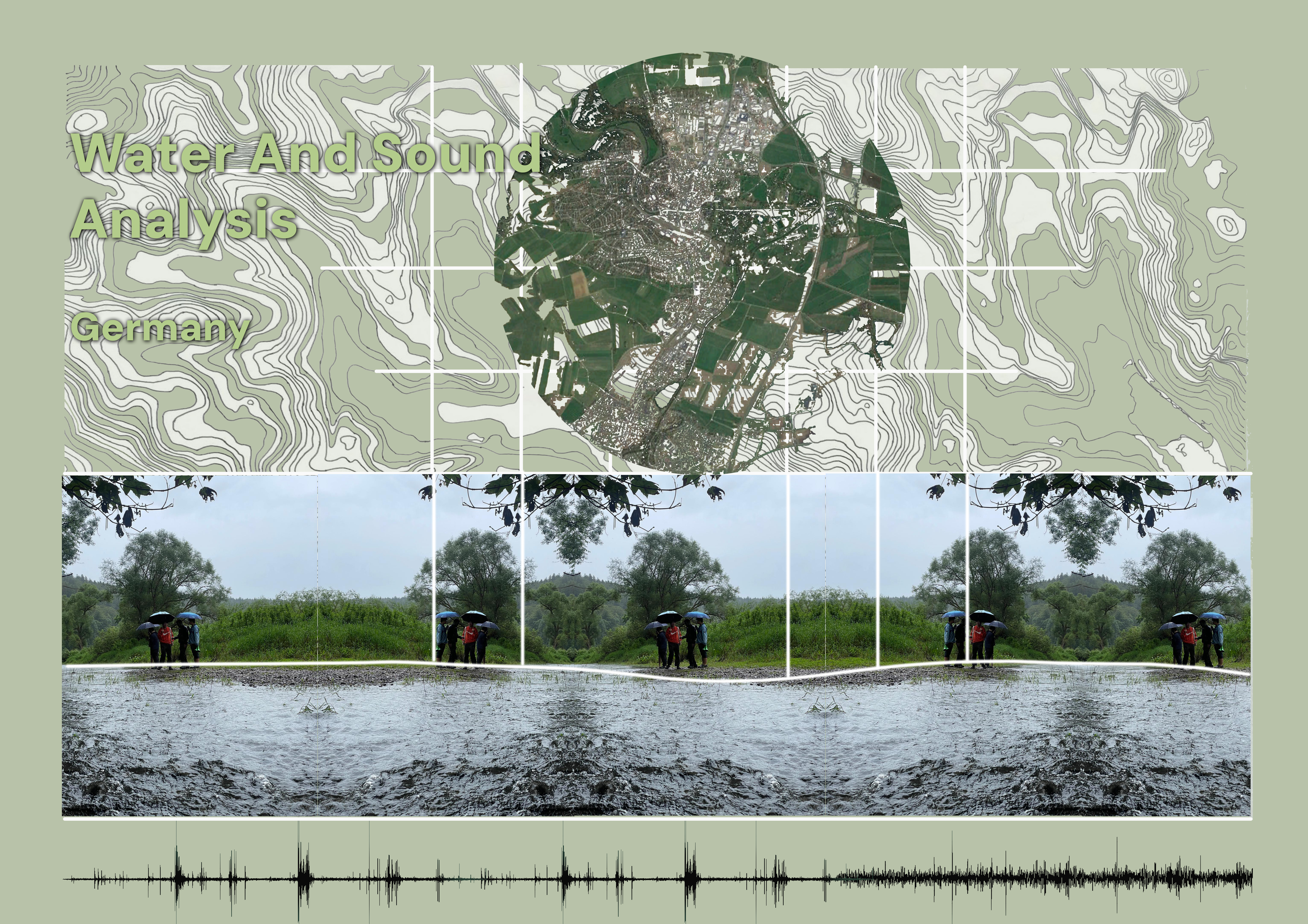Sound and Water Analysis
Donauversinkung, Immendingen, Germany

Sound Analysis
Date and time
03/07/2024
14.00 pm
Atmospheric Situation A Soothing, Rainy Atmosphere
Step into a world where the rain is the star, gently falling and creating a peaceful, calming environment. The atmosphere is fresh and refreshing, inviting moments of quiet reflection
- Steady Rainfall: The rain falls steadily, its rhythmic patter creating a soothing background sound.
- Cool Refreshment: The air feels crisp and fresh, invigorated by the rainfall.
- Calm and Peaceful: The sound of the rain dominates the scene, with no wind to interrupt the tranquility.
Water Analysis

Surface water from the Danube River was analyzed at the Donauversinkung sampling point in Germany to assess its compliance with regulatory standards. The evaluation considered the Oberflächengewässerverordnung (OGewV), the European Parliament’s Directive (EU) 2020/2184, the World Health Organization (WHO) guidelines (2011), and the German Drinking Water Ordinance (TrinkwV, 2024). While OGewV provides a framework for surface water quality in Germany, it does not address all relevant parameters. Consequently, supplementary guidelines from the EU and WHO were utilized to ensure a holistic analysis of the water quality at this location.
The analysis revealed that several parameters met regulatory requirements, indicating a generally favorable quality of the Danube River at Donauversinkung. The water temperature of 9.2 °C is well below the seasonal OGewV threshold of 21 °C, signifying an ideal thermal environment for aquatic life. The pH level of 8.16 falls within the OGewV’s acceptable range of 7.0–8.5, reflecting balanced water chemistry. Conductivity at 452 µS/cm is far below the European limit of 2500 µS/cm, suggesting low levels of ionic pollutants. Additionally, total dissolved solids (TDS) at 297 ppm classify the water as excellent according to WHO standards. Parameters like nitrites (0.01 mg/L) and total phosphates (0 mg/L) are well within OGewV limits, indicating minimal nutrient pollution. Heavy metals such as chromium (0.015 µg/L), copper (0.01 µg/L), and iron (0.11 µg/L) also comply with respective regulatory limits, suggesting limited industrial or natural contamination.
However, certain parameters exceeded allowable thresholds, raising potential environmental and health concerns. The cadmium concentration of 0.205 µg/L slightly exceeds the OGewV limit of 0.2 µg/L, which could pose toxicological risks to aquatic organisms and accumulate in the food chain over time. While salinity at 198 ppm is marginally below the EU limit of 200 mg/L, its proximity to the threshold warrants monitoring to prevent adverse effects on water taste and ecosystem health. The elevated level of total carbon (9.52 mg/L) suggests significant organic matter presence, potentially impacting oxygen availability in the water. Addressing these issues would require targeted interventions to mitigate cadmium pollution and manage organic inputs, ensuring the long-term ecological stability and usability of the water resource.
References:
[1] Federal Ministry of Justice and Consumer Protection. (2016). Oberflächengewässerverordnung (OGewV) [Surface water ordinance]. https://www.gesetze-im-internet.de/ogewv_2016/index.html#BJNR137310016BJNE002400000
[2] European Parliament and Council. (2020). Directive (EU) 2020/2184 of the European Parliament and of the Council of 16 December 2020 on the quality of water intended for human consumption. https://eur-lex.europa.eu/legal-content/EN/TXT/?uri=CELEX%3A32020L2184
[3] World Health Organization. (2011). Guidelines for drinking-water quality: Fourth edition, incorporating the first addendum. https://www.who.int/water_sanitation_health/publications/2011/dwq_guidelines/en/
[4] Bundesministerium der Justiz. (2024). Trinkwasserverordnung (TrinkwV) [Drinking water ordinance]. https://www.gesetze-im-internet.de/trinkwv_2001/
